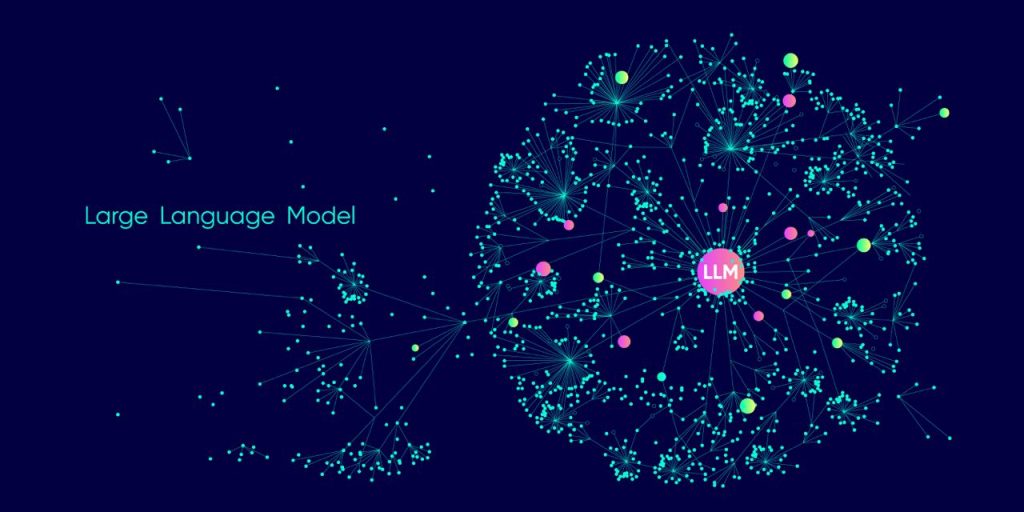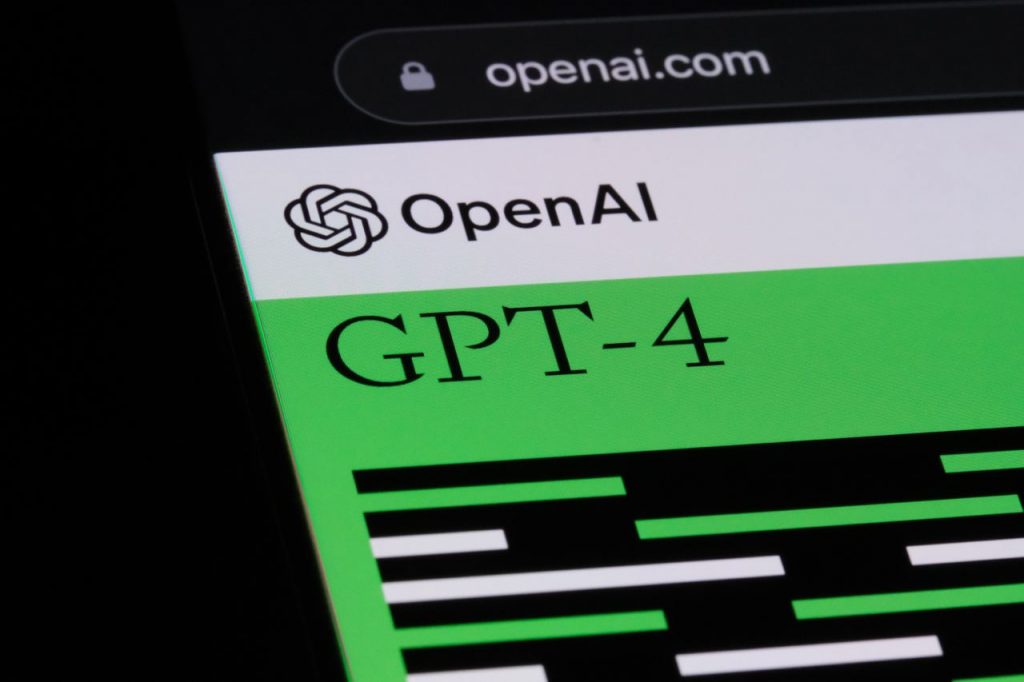Language is a fundamental human tool. It allows us to communicate, create, and share ideas. But what if machines could understand our language and use it in remarkable ways?
This is the promise of Large Language Models (LLMs), a cutting-edge technology revolutionizing artificial intelligence (AI).
In this blog post, we’ll talk about LLM concepts easily, exploring how these models work, what makes them so powerful, and how they’re shaping the future of technology.

Key Takeaways:
- Large Language Models (LLMs) are AI algorithms that understand and generate human language fluently.
- OpenAI’s GPT is a specific type, using a transformer architecture. LLMs are used in various applications, including chatbots, creative text formats, and scientific data analysis.
- They refine their abilities through trial and error, offering enhanced automation, content creation, and personalized experiences.
Large language model Explained
Large language models (LLMs) are a type of artificial intelligence (AI) that have taken the world of natural language processing (NLP) by storm.
These complex algorithms are trained on massive amounts of text data, allowing them to understand and generate human language fluently.
It’s important to remember that LLMs are still under development. While they can achieve impressive feats, they also have limitations. For example, they can be susceptible to biases present in their training data and may struggle with tasks that require real-world understanding.
What is the difference between GPT and LLM?
LLM (Large Language Model):
This is a broad term encompassing various AI models trained on massive amounts of text data to understand and generate human language. Think of it as an umbrella term for powerful language processing tools.

GPT (Generative Pre-trained Transformer):
This is a specific type of LLM developed by OpenAI. It utilizes a specific neural network architecture called a “transformer” to excel at tasks like text generation and translation. Essentially, GPT is a well-known and successful implementation of the broader LLM concept.
Here’s a quick example to understand these differences:
Imagine “cars” as LLMs, and different car manufacturers like “Toyota” or “Ford” as specific GPT models. All are vehicles (LLMs) designed for transportation, but each manufacturer (GPT) has its unique design and specializations within the broader category (car).
How do LLMs work?
The working of LLMs are much more complex so we try to explain these processes in an easy way.
Training on Massive Datasets:
LLMs are like that learner, but instead of textbooks, they devour massive amounts of text data. This data can come from books, articles, code, websites, and even conversations – the more varied, the better.
Deep Learning with Transformers:
The “brain” of an LLM is a complex neural network architecture called a transformer. Think of it as a sophisticated web of connections that analyzes the relationships between words in the training data.
Understanding Language Patterns:
As the LLM processes this data, the transformer starts to identify patterns in how words are used and sequenced. It learns the building blocks of language, including grammar, syntax, and context.
Statistical Prediction:
LLM is a massive statistical model. Once trained, it can predict the next most likely word in a sequence based on the information it has processed. This allows it to generate human-like text, translate languages, write different kinds of creative content, and answer your questions in an informative way.
Continuous Learning:
LLMs are not static. As they are exposed to new data and interact with users, they can continue to learn and improve their abilities.
Types of large language models
There isn’t a single, universally agreed-upon classification system for large language models (LLMs). However, we can categorize them based on a few key factors:
Architecture:
- Transformer-based LLMs: This is the dominant architecture for modern LLMs. Models like GPT-3, Jurassic-1 Jumbo, and LaMDA all fall under this category. Transformers excel at analyzing relationships between words in a sequence, making them powerful for tasks like text generation and translation.
- Recurrent Neural Network (RNN) based LLMs: RNNs process information sequentially, making them less efficient for handling long-range dependencies in language.

Training Data:
- Open Web Text (OWT) LLMs: These models are trained on massive datasets scraped from the internet, including articles, code, and social media content (e.g., GPT-3).
- Domain-Specific LLMs: These models are trained on data specific to a particular field, like medicine, law, or finance.
Functionality:
- Generative LLMs: These models excel at creating new text formats, like poems, code, scripts, or different creative writing styles. (e.g., Jurassic-1 Jumbo)
- Question-Answering LLMs: These models are specifically trained to answer your questions in an informative way, often by pulling information from vast knowledge bases. (e.g., Megatron-Turing NLG by Google AI)
LLM model use cases
Large language models (LLMs) are finding their way into a surprising number of applications, constantly pushing the boundaries of what’s possible. Here are some of the most prominent use cases:

Chatbots and Virtual Assistants:
LLMs power intelligent chatbots that can answer customer queries, handle basic transactions, and even provide personalized recommendations. They can be deployed on websites, messaging apps, and even voice assistants.
Content Generation and Summarization:
LLMs can generate different creative text formats like emails, reports, and marketing copy, freeing up human writers for more strategic tasks. They can also summarize lengthy documents, saving users valuable time.
Writing and Design:
LLMs can assist with creative writing by generating different creative text formats like poems, code, scripts, musical pieces, or even different writing styles. They can also be used for brainstorming ideas and overcoming writer’s block.

Art and Music Generation:
Some LLMs are being used to create unique artwork and even compose music pieces, pushing the boundaries of creative expression.
Language Learning:
LLMs can be used to develop interactive language learning tools that simulate real-world conversations and provide personalized feedback to learners.
Scientific Data Analysis:
LLMs can be trained to analyze vast amounts of scientific data, helping researchers identify patterns and make discoveries.
Key components of large language models
Large language models (LLMs) are like language learning powerhouses, but instead of flashcards and textbooks, they devour massive amounts of text data. This data gets fed into a complex neural network, most commonly a transformer architecture, which acts as the LLM’s brain.
The transformer works by first converting words into numerical codes (embeddings) that capture their meaning and how they relate to other words. Then it has a two-part process: the encoder analyzes the encoded input text, understanding its structure and context.
The decoder takes that information and predicts the next most likely word in the sequence, building a new sentence or response. Crucially, the attention mechanism allows the LLM to focus on important parts of the input, like a student paying close attention in class.
Finally, through a process of trial and error (loss function and optimization), the LLM refines its abilities to become better at understanding and generating human-like language.
Benefits of large language models (LLMs)
Large language models (LLMs) are revolutionizing how we interact with machines and information. Here’s a breakdown of their benefits, limitations, and growing importance for businesses:
Enhanced Automation: LLMs excel at automating tasks involving text analysis and generation.
- Content Creation and Summarization: Thes models can generate different creative text formats, write reports, and summarize lengthy documents.
- Personalized Experiences: LLMs can personalize interactions with customers by tailoring responses and recommendations based on individual needs and preferences.
- Advanced Customer Service: AI chatbots that can answer customer queries, troubleshoot problems and even provide emotional support.
- Innovation and Research: Analyze vast amounts of data, assisting in scientific discovery, drug development, and even material science.

Limitations and Challenges of LLMs:
- Bias and Fairness: These models are trained on biased data can perpetuate those biases in their outputs. It’s crucial to ensure fairness and mitigate potential discrimination.
- Limited Understanding: It may struggle with grasping the deeper meaning or intent behind language.
- Explainability and Transparency: Understanding how LLMs arrive at their outputs can be challenging. This lack of transparency can raise concerns about accountability.
- Safety and Security: LLMs can be misused to generate harmful content or manipulate people. Security measures are needed to address these potential risks.
Why are LLMs becoming important to businesses?
Despite their limitations, large language models (LLMs) offer a compelling value proposition for businesses. LLMs can significantly boost efficiency and productivity by automating repetitive tasks, freeing up employees to focus on more strategic endeavors.
They also enhance customer engagement by personalizing interactions and providing 24/7 support, leading to higher satisfaction. Furthermore, LLMs empower businesses to make better decisions by analyzing vast amounts of data and generating valuable insights.
Ultimately, LLMs can be a key driver of innovation and competitive advantage, as they enable businesses to develop new products and services that stand out in the marketplace.
Future advancements in large language models
The future of large language models (LLMs) is bright. We can expect significant growth in their scale and efficiency, allowing them to tackle even more complex tasks and potentially achieve a deeper grasp of language. Beyond just processing information, future LLMs might develop reasoning abilities to understand context and draw inferences. Imagine models that continuously learn and adapt, becoming ever more versatile partners through user interaction and real-world data.
If you plan to make an LLM models, you can rely on us, contact us to get more information.



